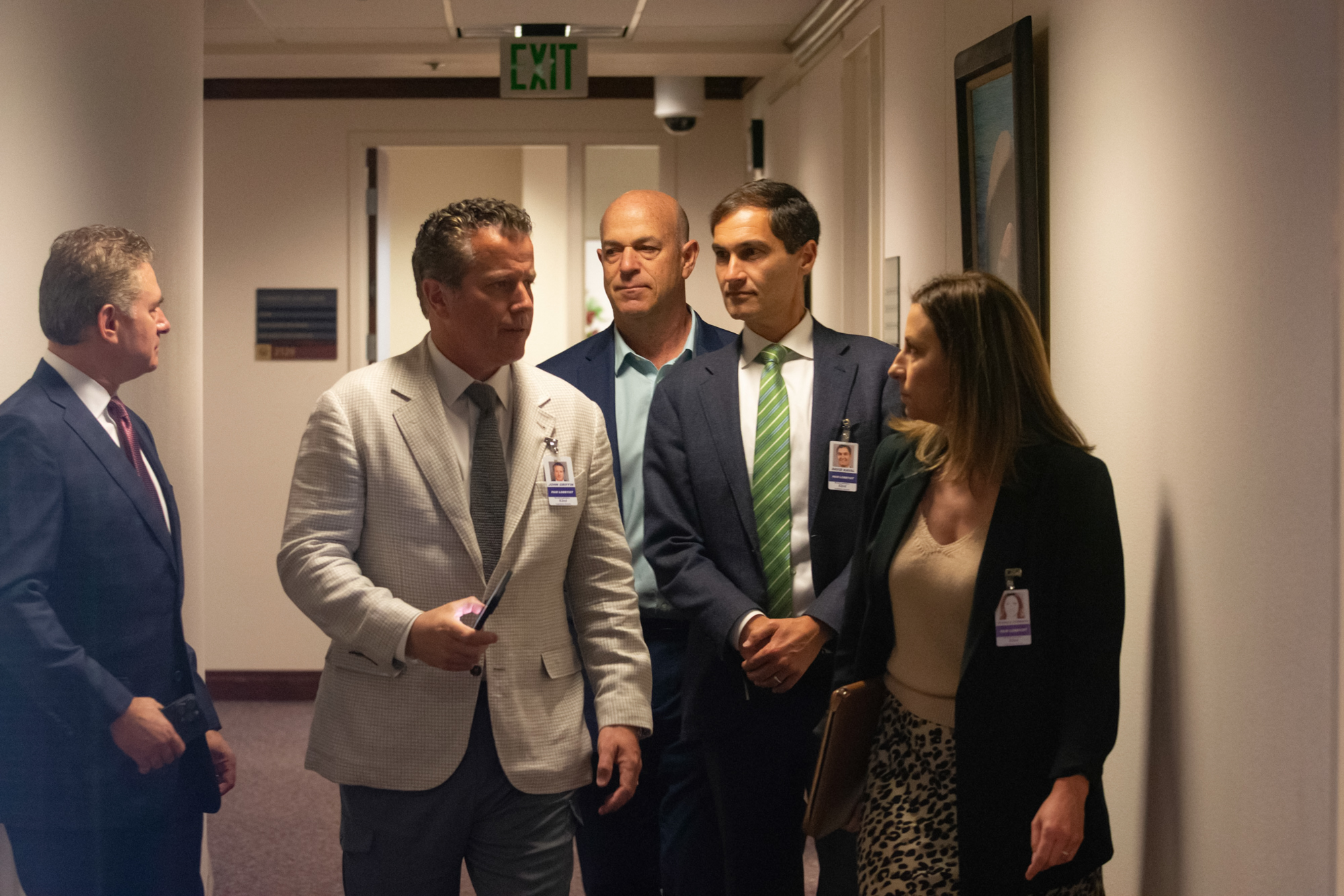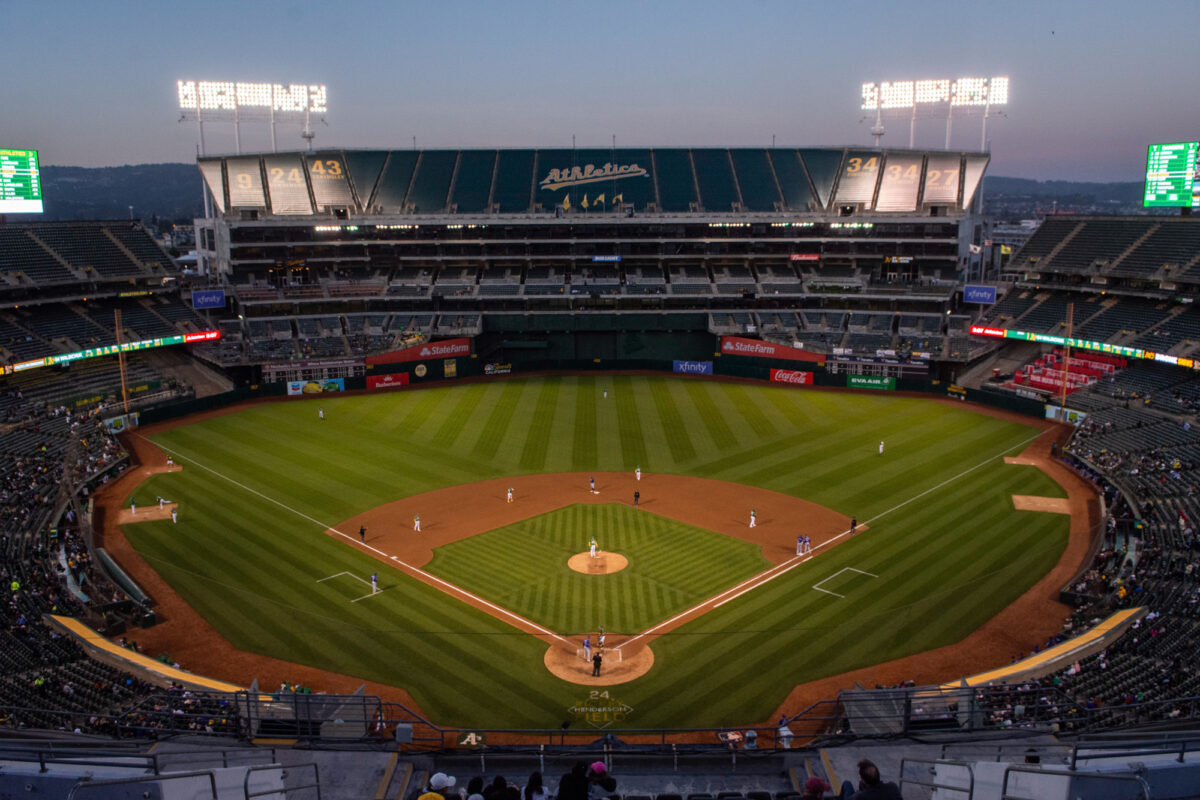A’s president: Ownership to fund ‘one of the largest equity contributions ever’ for Las Vegas stadium

Though Major League Baseball hasn’t yet issued a decision on the relocation of the Oakland Athletics to Las Vegas, team president Dave Kaval said Tuesday the franchise is working toward securing the more than $1 billion in private financing needed for the construction of its planned $1.5 billion Las Vegas Strip ballpark.
Kaval said the family of A’s owner John Fisher would “make one of the largest equity contributions” ever by a major league owner toward the cost of building a new ballpark. The commitment through private funding streams would be second only to the private money used for Yankee Stadium, which opened in 2009.
“It’s a huge commitment to Las Vegas and Nevada,” Kaval said in an interview with The Nevada Independent. “I think it demonstrates the willingness to invest and have a great product on the field.”
Nevada lawmakers and Gov. Joe Lombardo approved up to $380 million in public financing on June 15 to fund a portion of the stadium construction. The package includes up to $180 million in transferable tax credits from the state (which the team could sell to other businesses for cash), an estimated $120 million in Clark County bonds and a $25 million credit from the county for infrastructure needs around the stadium.
Kaval said a move to Las Vegas would allow the team to sign high-priced players.
“You wouldn't invest in the stadium like that, and also not invest in the quality of the product,” Kaval said. “So that's something that we really want to reiterate and I think will be an important aspect as we launch the team in Vegas.”
Kaval said the A’s are working with investment firm Goldman Sachs on the private financing, which would be a combination of debt (borrowed money that is paid back with interest) and equity (money that is converted into an ownership percentage). He did not say how much Fisher or his family would contribute toward the private financing piece.
Fisher has an estimated net worth of $2.5 billion. He is the founding partner of investment firm Sansome Partners and the youngest son of Gap founders Doris and Donald Fisher. A’s representatives said in June the private financing deal is similar to how the group built a Major League Soccer stadium in San Jose for $100 million.
Yankee Stadium, which replaced the aging ballpark of the same name, opened in the Bronx, New York, in 2009. The venue cost more than $2.3 billion and was funded in part by $670.6 million from the Yankees' ownership. The remaining $1.2 billion came from public money and tax breaks.
Neil deMause, the author of Field of Schemes, a book about public subsidies for stadiums and the name of a companion website for sports stadium news and analysis, said other than Yankee Stadium, no other baseball stadium has cost anywhere close to $1.5 billion.
“So it should go without saying that the priciest construction is going to come with the priciest private cost,” he said in an email.
Major League Baseball’s newest ballpark, Globe Field in Arlington, Texas, which opened in 2020, cost $1.2 billion. Owners of the Texas Rangers and the city of Arlington each put up $600 million to cover the cost.
However, the figure that Kaval needs to secure through private financing is less than what the ownership of the Kansas City Royals has proposed contributing to replace their existing stadium that was built in 1973. Ideally, owner John Sherman said he wants to build a $2 billion ballpark and entertainment complex in downtown Kansas City with $350 million of the cost provided via taxpayer funding while the team finances the remainder of the project.

Las Vegas bound
The A’s play in the Oakland Coliseum, which is tied with Angel Stadium in Anaheim, California, as the fourth oldest of the 30 major league stadiums. Both opened in 1966.
The A’s have baseball’s worst record at 33-86 and have been criticized for trading away star players over the last few years as a cost-cutting effort while the team explored potential stadium sites in Las Vegas.
In May, the A’s settled on 9 acres of a 35-acre site at the Las Vegas Strip and Tropicana Avenue for a retractable roof stadium. Kaval said Tuesday that the stadium would have 33,000 seats, up 3,000 seats from the previously announced plans.
The site currently houses the Tropicana Hotel and Casino, which will be demolished before stadium construction begins.
Real estate investment trust Gaming and Leisure Properties (GLPI), which owns the 35-acre site, committed $175 million toward the demolition costs of the Tropicana. The A’s are not paying any cost for the land, which is being donated by Tropicana operator Bally’s Corp. The company, which leases the land for $10.5 million from GLPI, plans to build a new hotel-casino on the site adjacent to the ballpark.
Kaval said Tuesday the A’s hope to finish selecting a new architect for the ballpark in a couple of months. Two architecture firms, Gensler and a combined effort by HTNB and Bjarke Ingels Group, are competing for the contract. Gensler built the A’s spring training complex in Mesa, Arizona; HTNB worked on the designs of Allegiant Stadium and Bjarke Ingels developed the team’s proposed Howard Terminal project in Oakland.
“We’re going to have a facility that is fan friendly for locals and tourists, but it also fits into the larger neighborhood of that part of the Strip,” Kaval said.
